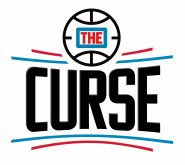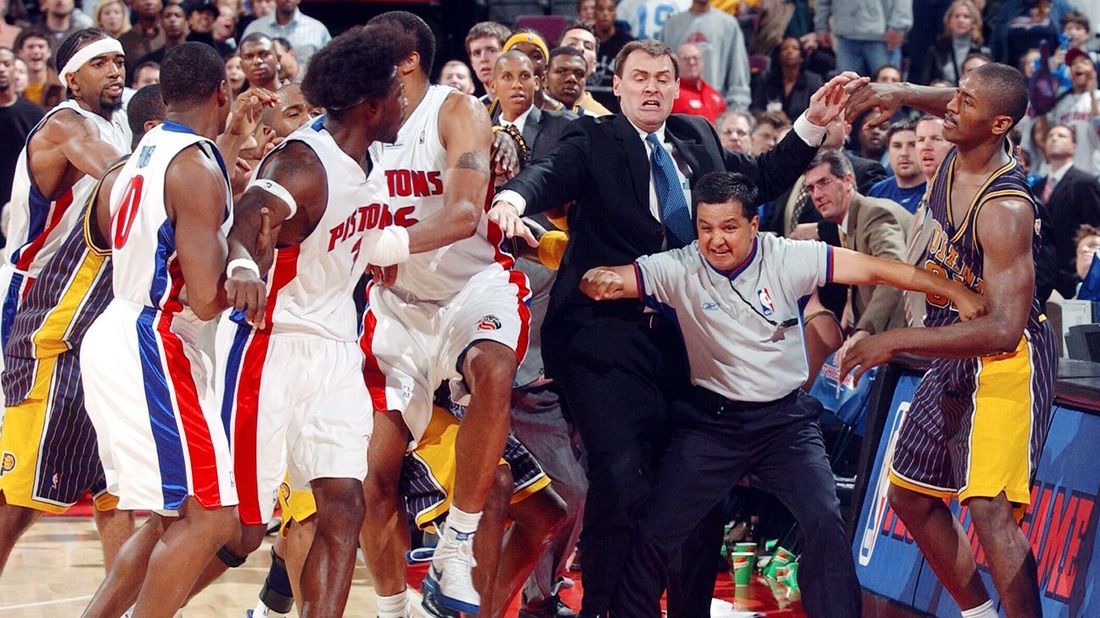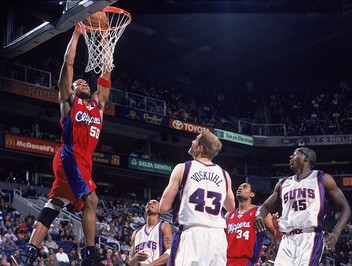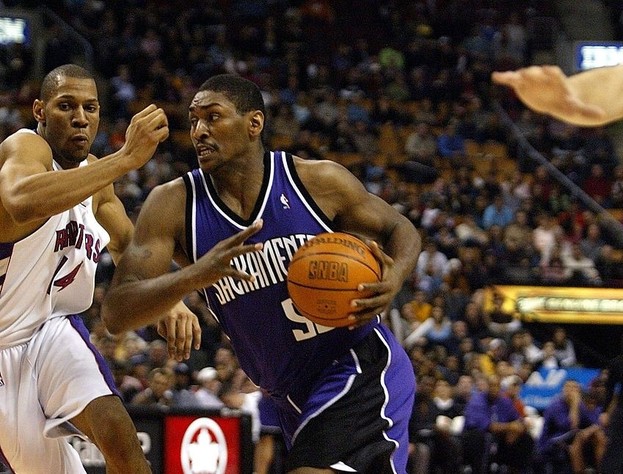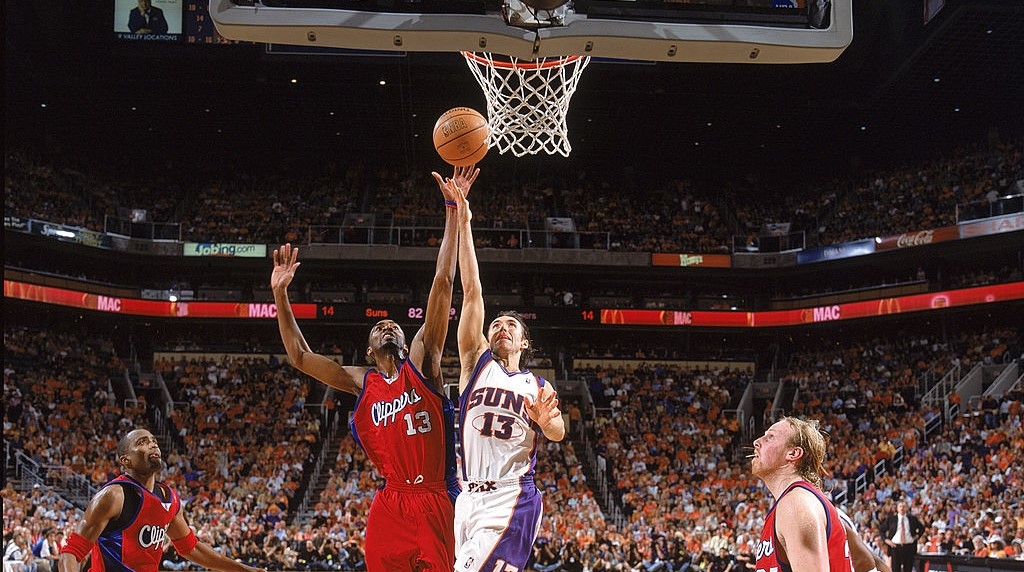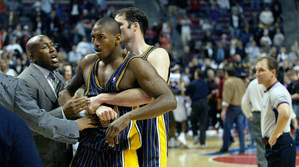
Today marks the 12th anniversary of the “Malice at the Palace”, one of the ugliest incidents in the history of the NBA. And while much has been written about this regrettable brawl, few people are aware of how close the Clippers came to trading for one of the key protagonists in the aftermath of that infamous evening.
By Mick Minas
When a Detroit Pistons fan threw a cup of Diet Coke at Metta World Peace (who was known as Ron Artest at the time), it’s unlikely that anyone at the Palace of Auburn Hills could have anticipated the chain of events that were about to follow. World Peace responded to being hit in the face by the cup of soda by running into the stands and throwing punches at the person whom he believed was responsible. (It turned out that the fan whom World Peace attacked was not the person who threw the drink). This led to a series of wild scenes as a number of fights broke out around the stadium between players and spectators. As a result of this melee, World Peace was suspended for the remainder of the 2004-05 regular season and all of the Pacers’ playoff games, resulting in almost $5 million in lost salary.
Fast forward to the start of the 2005-06 season and World Peace was back playing for the Pacers. However, rather than trying to maintain a low profile, World Peace was again making headlines for all of the wrong reasons. The season was just 16 games old when World Peace managed to get himself suspended again, this time for publically complaining about Indiana coach Rick Carlisle’s offensive system. During the interview where World Peace made the comments which led to the Pacers’ decision to suspend him, he acknowledged that he was disrupting his team’s offense. However, he then added that this was not really his fault, saying that he dominated the ball because “every time someone is on me, it’s a mismatch.”
Meanwhile, over in Los Angeles, the Clippers were off to the best start in franchise history. By the end of November, they sat atop of the Pacific standings with a 10-5 record. Elton Brand was also named the Western Conference’s Player of the Month, the first time in 25 years that a Clipper received this honor. (Freeman Williams was the only previous member of the franchise to win this award, way back in December 1980.) The Clippers’ front office was undoubtedly happy with this early success but they chose not to rest on their laurels. Instead, they spent much of December working on upgrading the roster via a blockbuster trade with Indiana. The proposed deal was a straight swap of starting small forwards, with the Pacers receiving Corey Maggette and the Clippers getting Metta World Peace.
For Indiana, the deal gave them the chance to off-load World Peace, who had become a significant distraction for a Pacers’ team that was regarded as a legitimate championship contender. For the Clippers, the trade represented a chance to upgrade their line-up in the one area where they needed the most help- at the defensive end. While both players involved in the deal possessed similar offensive capabilities, World Peace was considered a vastly superior defender. (World Peace was named the NBA's Defensive Player of the Year in 2004, becoming just the second perimeter player to win the award in 16 years.)
The talks between the two franchises continued throughout December, eventually progressing to the point where World Peace and his agent sat down for a meeting with Elgin Baylor and Mike Dunleavy. With the two parties seeing eye-to-eye on what World Peace’s role would be if he were to join the Clippers, it looked as if the deal was about to get the green light. At least, that was the case until Indiana’s medical staff weighed into the discussions. At the time that the Pacers’ and Clippers’ front offices were discussing the trade, Maggette’s left foot was in a cast, due to a ligament injury. He was initially expected to miss just a few weeks of action. However, it soon became apparent that the injury was more severe than first diagnosed and might even require season-ending surgery. This posed a major problem for the Pacers’ doctors, as it would not be known whether surgery was required until the cast was removed. If Indiana were to go ahead with the trade, they would be essentially rolling the dice and praying that Maggette’s foot was fully healed when the cast came off. This turned out to be too big a risk and the Pacers backed out of the deal. World Peace was eventually traded to Sacramento in late January. When he arrived in Sacramento, the Kings appeared to be on the verge of failing to qualify for the playoffs for the first time in eight years. However, led by the inspired play of World Peace, who averaged 16.9 points, 5.2 rebounds, 4.2 assists and 2 steals per game, the Kings won 9 of their last 11 games to snatch the West’s final playoff berth.
Meanwhile, down in Los Angeles, the Clippers also qualified for the post-season and after eliminating Denver in round one, were set to face the Phoenix Suns. The biggest issue that Mike Dunleavy confronted as he planned for the Phoenix series was who to start at the small forward position. Dunleavy initially elected to go with Quinton Ross, for his ability to defend league MVP Steve Nash. However, while Ross was a superb defender, he was also a very limited offensive player, which allowed Nash to effectively rest at the defensive end. When Dunleavy replaced Ross with Corey Maggette, whose size and scoring ability caused match-up problems for the Suns, Nash was free from the constraints of Ross’ hounding defense. Dunleavy ultimately never found an answer to this conundrum throughout the seven game series and the Suns eventually prevailed and moved onto the Western Conference Finals.
Obviously it’s impossible to say whether the outcome of this series would have been any different had Metta World Peace been playing for the Clippers instead of Corey Maggette. However, one can easily make the case that World Peace would have provided the right balance between offensive threat and defensive stopper that Dunleavy was searching for. Had the Clippers been able to get past the Suns, it’s well within the realms of possibilities that they could have defeated Dallas and Miami and gone on to claim the 2006 NBA Championship. After all, the eventual champion Miami Heat won a total of just 52 regular season games- one of the lowest victory tallies for a championship winner in NBA history. To read more about Mick Minas' new book The Curse: The Colorful & Chaotic History of the LA Clippers click here. To purchase a copy click here. If you enjoyed reading this blog post, I would really appreciate you sharing it with your friends by clicking on the appropriate icon below:
1 Comment
|
|
Copyright © 2015
